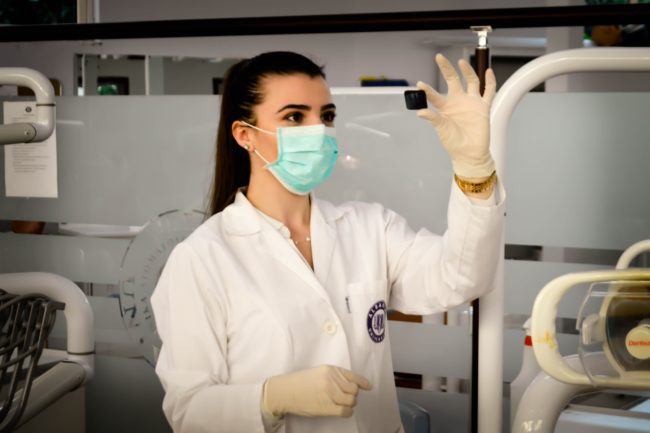 The National Science Foundation (NSF) is a marvelous gift of an organization that advances science and engineering research in the U.S. and abroad. This independent federal agency was established by Congress during the 1950s to continue the science and technology enterprise that began during World War II.
The National Science Foundation (NSF) is a marvelous gift of an organization that advances science and engineering research in the U.S. and abroad. This independent federal agency was established by Congress during the 1950s to continue the science and technology enterprise that began during World War II.
Their mission is to “promote the progress of science; to advance the national health, prosperity, and welfare; to secure the national defense…” through their support of fundamental science and engineering disciplines.
Roughly 93% of their annual budget of $8.3 billion (FY 2020) of grants and awards is allocated to support research projects, facilities, and STEM education. The NSF not only funds research in all 50 states but they also foster international scientific collaborations on all seven continents around the world. On average, the organization can receive 50,000 research proposals from scientists and engineers in a year and they fund a good fraction of those research projects. In fact, 242 NSF-funded researchers have received Nobel Prizes to date.
The NSF keeps track of the most promising research by maintaining constant contact with research communities to identify and monitor areas most likely to excel with exceptional progress. They select these areas of science and choose the most capable people to conduct the research. The organization also supports world-class research facilities and infrastructures focused on interdisciplinary research in areas such as chemistry, engineering, materials, nanotechnology, energy, and biology. The NSF has four oceanographic research vessels and provides support to all ships and submersibles in the U.S. Academic Research Fleet.
 The NSF owns high-altitude science research aircraft that is operated by the National Center for Atmospheric Research. The NSF/NCAR’s Gulfstream V can probe the earth’s atmosphere flying as high as 51,000 feet, providing unique research capabilities.
The NSF owns high-altitude science research aircraft that is operated by the National Center for Atmospheric Research. The NSF/NCAR’s Gulfstream V can probe the earth’s atmosphere flying as high as 51,000 feet, providing unique research capabilities.
The NSF also supports ground-based telescopes and observatories around the world and funds seven of the world’s supercomputers. There are field stations and marine laboratories, facilities to study earthquakes, tsunamis, and other natural disasters. They even expand science and engineering in the workforce. But perhaps the most noble program of them all is the REU, the Research Experiences for Undergraduates program.
The REU
The NSF allocates 25% of their annual budget for REU federally funded academic fundamental research program at colleges and universities. This summer internship is designed for undergraduates studying mathematics, physics, chemistry, geology, biology, psychology, and computer science.
Faculty undergo heavy recruitment of high school and undergraduate students and spend countless hours sorting through the hundreds of hopefuls who apply through their websites, often using antiquated systems. The sheer volume of application submissions versus the available number of seats in any given REU program requires rigorous screening through multiple processes. The end result is a small group of students who are accepted into any one REU program.
 The level of work required of administrators to recruit and process applicants can be a tedious. The REU application can be as lengthy as a college admissions application and just as competitive as acceptance into the most prestigious university.
The level of work required of administrators to recruit and process applicants can be a tedious. The REU application can be as lengthy as a college admissions application and just as competitive as acceptance into the most prestigious university.
The program generally requires between one and three letters of reference, a transcript, up to two essays, a letter of interest, a resume, a biographical form, or some combination of all of the above. There is a heavy amount of manual work in recruiting targeted high school students. Administrators also process high volumes of application submissions by screening, reviewing, and interviewing applicants. It is an exhaustive procedure with every REU cycle after cycle.
There are some software forms available to help faculty and staff with this tedious process but still what remains is a clunky, antiquated system where there is very little, if any, automation in simplifying the many steps involved.

Introducing the REUApp. This application was developed by a higher education strategist and technologist who headed IT and marketing departments at a major ivy league university. This developer noticed the amount of work required of administrators overseeing their REU programs. The gaping holes in the various processes caused delays, lapses in communication, redundancies, and a whole lot of frustration.
The REUApp streamlines the recruiting and application process by automated modules that are designed for each of the user groups involved in the process, including a reviewer module. There are tickler/reminder systems in place, templates, rating systems, and ways to share information- or not – among other participating reviewers.
The Student Module
This module allows the student to complete the application in one sitting or save the work and complete in shifts with the app’s flexible data entry. The student can check the status of their application online thus eliminating the need for them to reach out and inquire to the college or university. They can also keep track of the various REU programs to whom they are applying. They can request recommendations and have all of the accompanying documents rounded up for submission in one tidy place with reminder notifications to meet deadlines and to submit the forms with absolute accuracy.
The Recommender Module
This secure and efficient one step recommendation process reduces time and eliminates frustration for students and recommenders. The letters can be submitted privately online and also has automated reminders. Recommenders are busy. This tool creates a quick and easy way for the student to receive the recommendation letter.
The Faculty/Reviewer Module
This module enables auto assignment of students along with the option to provide detailed reviews. The data access is secure, it is multi-platform with areas for detailed commenting. This keeps each applicant’s submission details in one convenient place with review systems and customizable filters. Reviewers can download and print pdf files of the applicant of their choice and keep communication files and templates for repeated and future use.
The Program/Admin Module
No more going back and forth with IT and the Webmaster to set up a portal each year. This application get everything up and going fast! In fact, you don’t even need support from your IT team at all; the software is cloud-based with multi-level configurations, reporting, and data integration. It even has an auto-pilot mode.
Other perks:
- There is no software to download
- No complicated licensing fees
- No long term contracts
- Competitively priced
The REUApp recently launched and is causing quite a bit of attention among REU Sites. Who doesn’t love the idea of saving time that ultimately saves money. While there are some administrators who believe they have all the tools they need to support their efforts actually, these are just forms. There really is no automation out there as with the REUApp. The strategy and technology agency behind the development has worked with higher education institutions for nearly 15 years and can identify the pain points inherent in a primarily manual REU recruitment and application process.
It is REU recruitment and application season is right now. If your institution has an REU program and you would like to learn more about the app, reach out to award-winning Sanmita for a demo today.
Want more? Sign up to get our newsletter delivered to your inbox the first Thursday of every month. Receive links to the latest web-related news and blog articles, best practices, and thought-leadership commentary.
